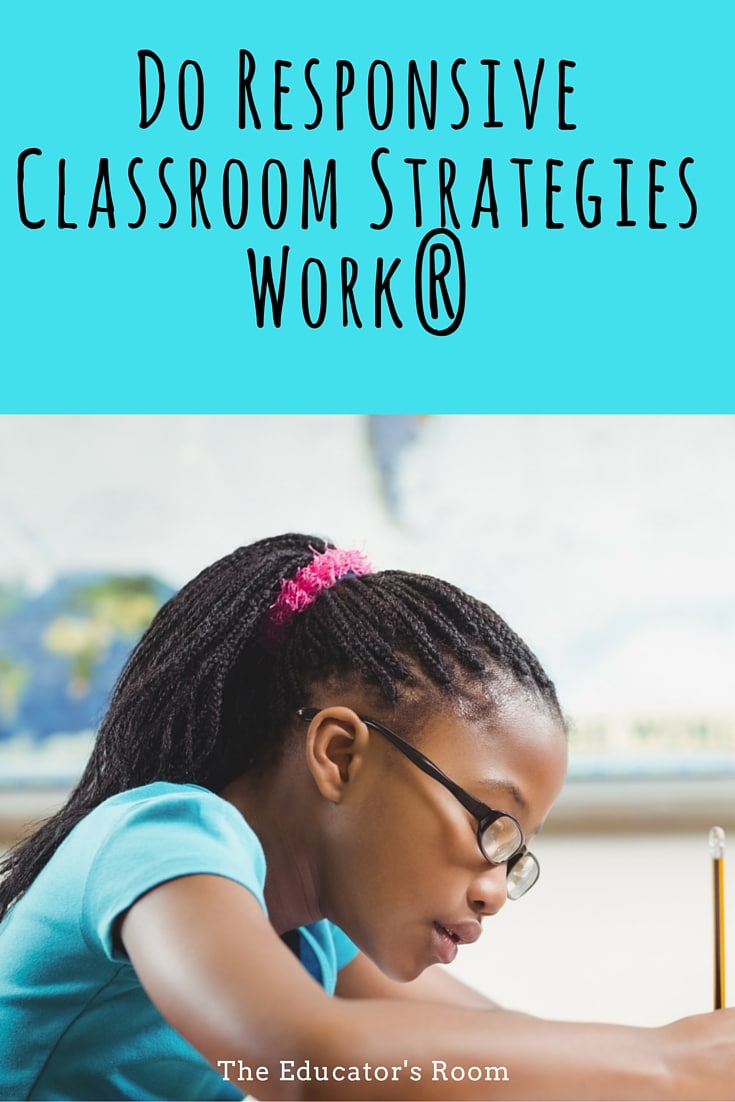Try this in your classroom when things are getting crazy. Say in a nice firm teacher voice, “I notice six people are doing their work.” Watch what happens. I can almost guarantee that the room will begin to quiet, students will look around and start to work. You might have to announce a new, higher number on task to get the stragglers down. You might have to wink at the one who wants to make sure you notice her. It amazes me. It always works. It might take a little longer the day before Spring Break, but it still works. The reason it works is that, while the students want you to approve of them, you are not singling out individuals, you are “seeing” what is going right, and you are not judging. It is part of the Responsive Classroom philosophy.
I am a Responsive Classroom teacher and have been for over 15 years. I actually took my level I training before I began teaching. It has affected nearly every decision I made in my classroom. I had the incredible experience of teaching in an RC school, meaning the school’s administration, if not all of the teachers, embraced the philosophy of Responsive Classroom.
A three-year study released in the March 2014 issue of American Educational Research Journal, conducted by the University of Virginia, shows that teachers who fully implemented Responsive Classroom strategies in their classrooms saw student gains regardless of socioeconomics. The gains were greatest with low achievers. It also had a positive influence on the classroom environment.
I was thrilled to read this. Not because I was surprised, but because it is nice to feel validated. There are still people who feel it is a touchy-feely, mumbo-jumbo concept. In fact, this study, as well as one released in September 2012, show that RC not only improves student achievement; it improves student engagement, decreases behavior problems, and leads to more high-quality teaching. Math scores were positively impacted by the program. The largest changes were when the strategies were implemented school-wide. I believe it because I experienced it first hand.
I taught in a little neighborhood school of 600 pre-K through 8 graders in a huge urban district. Our school has been using this philosophy for about 18 years. It is a school that is about 85% Latino and 90% low-income. We have great test scores, a lower than average problem with bullying, and a tremendous feeling of community. Do I credit it all to this one philosophy? That’s hard to answer. It reminds me of the song from Rogers and Hammerstein’s Cinderella, “Do I love you because you’re beautiful? Or are you beautiful because I love you?” Did this school gel with Responsive Classroom because of the existing school personality? The school already had a respect for its students and faculty when the idea of this program was suggested by an area education project. Our test scores, however, were only mediocre. A few years ago, our math scores hit 97% meet or exceed for our sixth graders.
Responsive Classroom is an approach to elementary education teaching. The idea is that if you teach children how to behave socially, they learn to problem solve for themselves, they feel safe and are willing to take academic risks, and they will push themselves to the next level. The teacher leads the class, not rules it. We are the models, not the tyrants. Everyone is treated with respect. Best of all, the kids know they matter. They are seen as individuals.
If you watch videos of RC, you will see the morning meeting. Morning meetings were expected in my school. There is structure to the meetings, and while we play games, there is a purpose to everything we do in the meeting. Everyone gets greeted, we build community, and we discuss what we are going to do that day. The chart includes academics. For example, my chart in second grade always included a money component, calendar information in a variety of ways, and usually, a review of some fact we learned the day before.
Morning meeting, while it was the most visible component, is only part of the picture. Proactive discipline, academic choice, and positive teacher language are other key components.
The discipline component really revolves around the idea of- if you broke it, you fix it. Discipline is done in a one-on-one conversation not embarrassing a child in front of everyone. Yes, it sounds idealistic but it works. Was I a perfect little RC teacher? Hardly. It is a process and we all have bad days. In general, it helped to have an ideal, a model of what I wanted my students to experience.
The concept of giving students academic choice increases understanding and broadens knowledge. Best of all, students feel engaged and you can hear the busy learning noise of being involved in what they are learning.
Social skills are seen as equal to academic skills. We practiced, and practiced, and practiced how to be in a relationship with each other. When it fell apart, we went back and began again. While this sounds time-consuming, in fact, it gave me a tremendous amount of freedom to focus on what we needed to be learning. Sure, some days it felt like all I did was redirect and reflect on the social aspect of the class. The payoff was the next day, I could be hands off, working with small groups, while the rest of the seven and eight-year-olds in my room took charge of their learning.
Most of all, the students were thrilled to be at school. They believed they were in a wonderful place. I don’t know about you, but I never felt that way as a kid. Children in a Responsive Classroom know they contribute to the community. It made teaching a joy.
My daughter was in second grade when Responsive Classroom began to be implemented at our school. When she was in her small charter high school, I would point out the four or five kids who went to grade school with her. The teachers always committed on the fact that these kids were “such nice” kids and always had a positive attitude. My response was, “Damn straight. It’s what we taught them to be.”
You can learn more at responsiveclassroom.org







Leave a comment